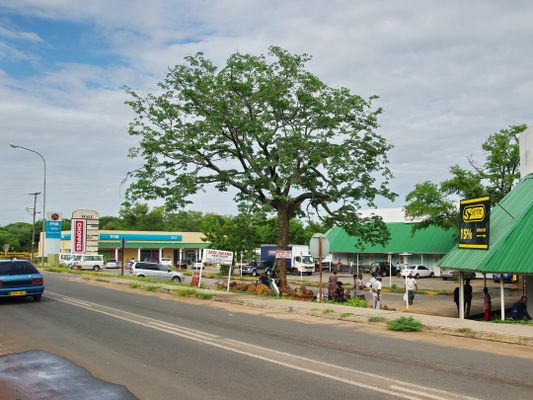Explore Chobe National Park's diverse wildlife, boat cruises, and bird-watching amidst a picturesque African landscape.
Chobe National Park in Botswana is a sanctuary for one of the largest concentrations of game in Africa. A notable feature of Chobe is its elephant population, which is probably the largest in the world. The park sprawls across floodplains, swamps, and woodland areas near the Chobe River, which provides a lifeline for animals during the dry season. Additionally, it's a prime destination for bird watching with over 450 species recorded. Visitors often embark on river cruises or game drives to witness the park's diverse wildlife.
Wildlife Safaris in Chobe National Park
Chobe National Park offers unparalleled game-viewing experiences, notably through guided safaris. Visitors frequently seek out the Savuti Marsh, renowned for its seasonal migrations and predator sightings, including lions and hyenas. The Linyanti Marsh, on the park's western boundaries, provides a more secluded environment where rare species like the African wild dog can often be seen. Game drives are the most common way to explore the park, with morning and afternoon tours being popular for maximizing wildlife encounters.
Boat Cruises on the Chobe River
A different perspective of the park's wildlife is best experienced on a boat cruise along the Chobe River. Such cruises afford close-up views of aquatic animals and birds, as well as elephants, buffalo, and other game as they come to drink and bathe. The cruises are especially rewarding during sunset when the lighting adds a sublime character to the already-stunning landscape.
Bird Watching Opportunities
Bird enthusiasts will find Chobe National Park to be a haven with its extensive variety of species, including African fish eagles, kingfishers, and several breeds of storks. The months of November to March are particularly exciting as migratory birds arrive, enhancing bird watching opportunities. The Serondela area, near the Chobe River, is a favorite spot due to the abundance of waterbirds.
The Unique Ecosystem of the Chobe Riverfront
The ecosystem along the Chobe Riverfront, also known as the Serondela region, changes dramatically with the seasons. During dry months, large herds of elephants and other herbivores can be seen congregating by the river. In contrast, the wet season transforms the landscape into lush greenery with ephemeral water pools, attracting a different array of wildlife.
Camping and Lodging within Chobe National Park
For those seeking an immersive experience, Chobe offers various camping options within its borders. Ihaha campsite is particularly well-regarded for its stunning location by the river and excellent wildlife viewing opportunities. For a more comfortable stay without compromising on the park's experience, lodges such as Chobe Game Lodge provide accommodations that blend comfort with the thrill of being surrounded by nature.
Seasonal Changes and Animal Migrations in Chobe
The park’s most dramatic shows of nature occur with its seasonal changes. The annual zebra migration between November and December is an impressive sight as these animals move in search of fresh grazing grounds. The floodplains near Linyanti Marsh become teeming with wildlife during the dry season as animals search for water sources.
Conservation Efforts within the Park
Chobe National Park's management undertakes significant conservation efforts to preserve its varied ecosystems. Visitors are educated about anti-poaching initiatives and educated on sustainable tourism practices that contribute to wildlife conservation. The park works closely with conservation organizations to maintain its biodiversity.
Cultural Experiences with Local Communities around Chobe
Beyond wildlife, Chobe is surrounded by communities with rich cultural heritages. Cultural tours to neighboring villages can be arranged for visitors interested in understanding local traditions and lifestyles. These interactions provide insight into how local communities are intricately linked with their natural environment.
Photography Tips and Best Spots in Chobe National Park
Photographers find Chobe National Park to be a paradise due to its stunning landscapes and abundant wildlife. Key locations such as the Chobe Riverfront at sunrise or sunset offer magical light for capturing images of animals in their natural habitats. Photographers are also encouraged to respect wildlife and adhere to park regulations to ensure minimal disturbance while taking their shots.
Access and Transportation Options to and within Chobe National Park
Access to Chobe National Park is primarily through Kasane, a town situated on the banks of the Chobe River. Kasane has an airport with domestic flights connecting it to major cities like Gaborone and Maun. Within the park, transportation is typically provided by safari operators through 4x4 vehicles designed for rugged terrain — ensuring that all safaris are both safe and environmentally conscious.










